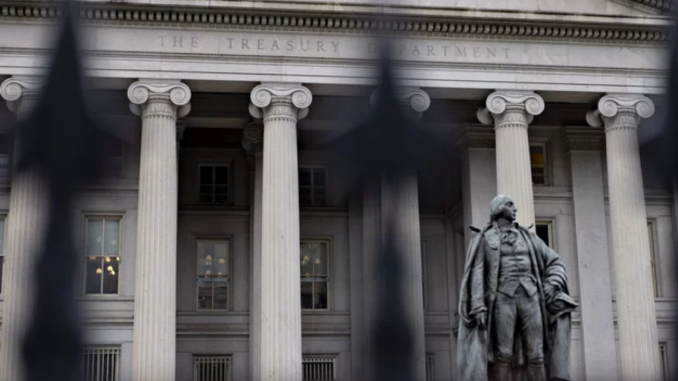
(Bloomberg) — Benchmark U.S. Treasury yields touched 1% for the first time since the pandemic-driven turmoil in March on the increased likelihood of Democrats winning control of the U.S. Senate.
The 10-year yield, a key global benchmark interest rate, climbed more than six basis points on expectation that Democrats could win two runoff Senate elections in Georgia, paving the way for more spending to revive the U.S. economy. Rising expectations for a so-called ‘Blue Sweep’ have already seen the yield curve edge steeper and shifted market-based inflation measures higher.
“The Georgia election results have been one of the key uncertainties plaguing global markets — the Democrats pulling ahead has a clear implication on U.S. fiscal policy and bonds,” said Andrew Ticehurst, strategist at Nomura Holdings Inc. in Sydney. “Additional stimulus would have to be funded and markets have clearly indicated they want to test the 1% level for Treasuries today.”
Treasury yields were gaining ahead of the U.S. elections in November, propelled in part by the expectation of more stimulus under a Democrat-led government. The move then faltered with control over the Senate in balance until the Georgia races, though progress on the Covid-19 vaccine rollouts has also buoyed yields, along with the easing in global trade tensions after a historic post-Brexit agreement.
The spread between five- and 30-year bond yields hit its steepest level since November 2016, when Donald Trump’s election sparked trades premised on stronger growth and higher inflation. Traders now see U.S. inflation averaging just over 2% per year over the coming decade, the highest level since 2018.
Where Next
Democrat Raphael Warnock ousted Republican Kelly Loeffler in Georgia, the Associated Press reported, leaving control of the chamber in question until the result of the state’s other runoff election is decided.
The climb to 1% for 10-year bond yields may just be the beginning of its ascent. Should the yields hold and extend from there, investors have said it could spark a domino effect across asset classes if the increase is accompanied by economic recovery and moderate levels of inflation.
Read: Treasury Yield Spike Risks Sparking Domino Effect in Markets
A confirmed Democrat sweep could push long-end yields significantly higher, and the Federal Reserve is likely to intervene only if the move jeopardizes the current easy financial conditions, according to Ed Al-Hussainy, a portfolio strategist at Columbia Threadneedle.
He sees potential for the 30-year yield to climb to 2.25%-2.50% from the current 1.76%.
For 10-year Treasuries, the breach of 1% completes a journey that began on March 3, when early indications of what the pandemic might mean for the U.S. economy pushed the yield below that level for the first time. Over the following week, it fell to a record low 0.314%.
The 1% level is a key psychological barrier for markets, said Vishnu Varathan, head of economics and strategy at Mizuho Bank Ltd in Singapore. As investors weigh the impact of a potential Democrat sweep, “I can see 10-year Treasury yields rising to 1.5% to 2% in short order if more and more uncertainty gets behind us,” he added.
*story by Bloomberg